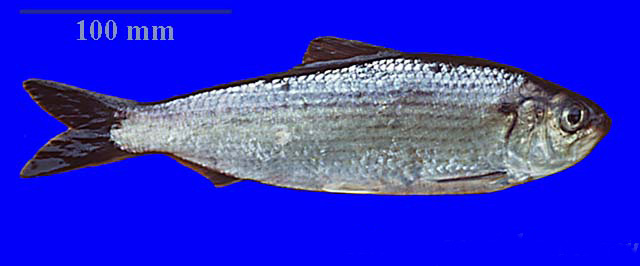Alewives on the Move
The silvery alewife (river herring) is a small (8-12-inch) fish with a rounded belly. Juveniles migrate in an incredible journey from tributaries and freshwater rivers where they hatched, through Long Island Sound to the Atlantic Ocean. As adults, they journey back again to freshwaters to spawn.

Wikimedia Commons.
Once plentiful, populations have severely declined due to overfishing, bycatch, pollution, and loss of access (dams, culverts) to their freshwater spawning grounds. Actions taken by state agencies and partner conservation organizations to help restore alewife populations include removing dams, building fishways, reintroducing pre-spawn adults into streams that had previously supported runs, and eliminating harvests. In Connecticut, an emergency fishery closure for the anadromous alewife is in effect. In New York, the anadromous alewife fishery is also closed with the exception of the Hudson River.
More Alewife Facts
- River herring runs used to turn some rivers “silver” each spring when they migrated by the millions upstream. They are abundant now only in rivers where they can reach good spawning habitat.
- Females produce 60,000 to 350,000 eggs, but only a few young fish survive to spawn 3 to 5 years later. The rest get eaten by other fish and animals (or they are caught in offshore nets as bycatch).
- Rivers and lakes with alewife and blueback herring tend to grow larger sport fish like smallmouth bass, largemouth bass, trout and landlocked salmon.
Want to know more facts? These and others are included in a US Fish and Wildlife fisheries web page on herring migration. And you can also learn more about the herring lifecycle at:
https://www.fws.gov/fisheries/fishmigration/alewife.html
Reconnecting Alewives to Historic Spawning Grounds

Since colonial times, fish passing through the Sound have been blocked from their upstream habitats due to barriers such as dams and culverts. The Long Island Sound Study helps to restore fish passage by supporting state and local efforts to remove dams, build fishways, and reconstruct impassable or undersized culverts. Once the barriers are removed, migratory fish such as river herring and American eel can return to their historic river habitats. Since 1998, Long Island Sound Study’s partners have reconnected 419 miles of streams for fish passage to and from Long Island Sound.
Learn More:
- Restoring Migratory Fish Passage in Long Island Sound Fact Sheet
- River Miles Restored Ecosystem Target
- Index of Anadromous Fish Runs
- CT DEEP Fisheries Biologist Steve Gephard fish report on spring migratory fish counts

And learn about fish migration around the world at the World Fish Migration Foundation website.
HOW DID THE ALEWIFE GET ITS NAME?
Merriam-Websters Dictionary states it is perhaps alteration of an Old French word, allowes, which is a kind of shad. Alewifes are related to shad. According to the Bronx River Alliance website New Englanders might have named the fish alewives after their home brewer. Read about this tale and other cultural facts in an article on the Bronx River Alliance website.